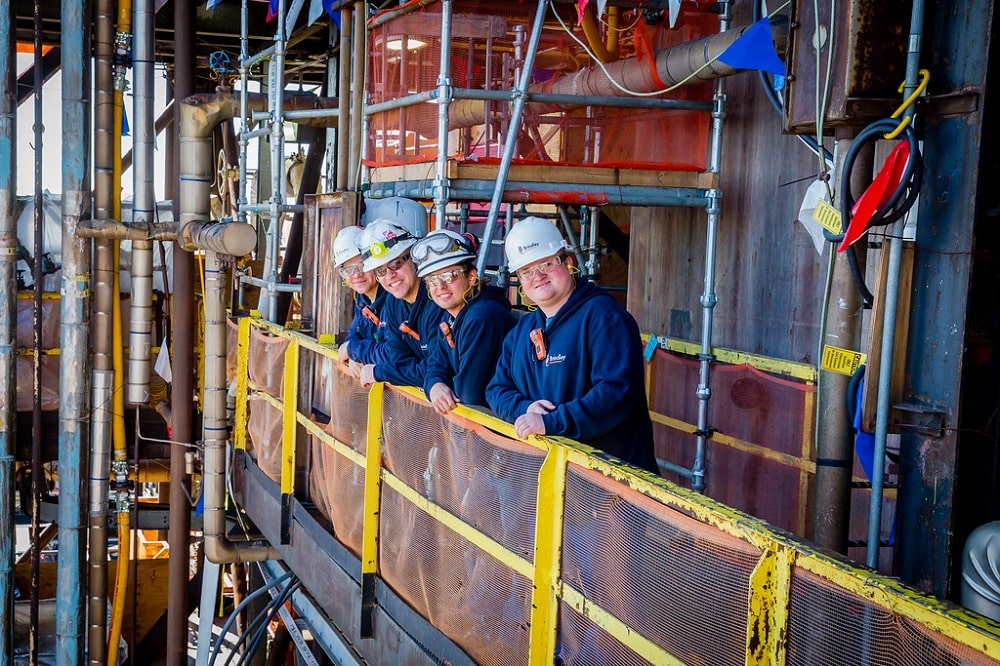By Chris Sedlacko, PE, Reliability Engineer, Brindley Engineering
Structural infrastructure is the foundation of reliable operation within all industrial facilities, but it is often overlooked despite the reality that it is aging and deteriorating at accelerating rates. As these structures reach the end of their effective service life, they begin to pose safety concerns and threaten the productive operation of the facility. Welcome to Part 7 of Brindley Engineering’s (BE) 10-part series on Infrastructure Reliability. In Part 6 we wrote about Tank reliability. In Part 5 we explored Piping and CUI. In Part 4 we wrote about level instrumentation. In Part 3 we explored electrical reliability. In Part 2 you read about process utilities, and in Part 1 we wrote about the risk of neglective critical infrastructure and protecting what matters. In Part 7 we will talk about Structural Reliability.
Inspecting Aging Infrastructure
The structural infrastructure in the industrial sector is comprised heavily of structural steel, reinforced concrete, and fireproofing. These materials are durable and resistant to the harsh environments that frequent the Oil & Gas, LPG, and Chemical industries. They are effective at supporting the operating loads involved in process facilities while mitigating fire damage and withstanding environmental events. The issue facing structural infrastructure is that most refineries and chemical plants in the U.S. are 4 or 5 decades old, and these structural elements are reaching the end of their useful life. Brindley Engineering has established a culture of reliability that is based on using inspection data to track and predict the deterioration of structural elements to efficiently budget and plan repairs to coincide with the tight downtime schedules that define the industrial sector.
Tracking Throughout the Lifespan
The most effective way to plan and budget for repairs is to track assets throughout their life. Currently, industrial facilities put significant effort into tracking process equipment and instrumentation, but limited effort into monitoring their structural assets. The industry is behind on the maintenance of their structural assets and is attempting to catch up without the necessary data to properly direct their decision making.
BE The Solution
Brindley Engineering has developed an asset management system geared towards improved structural reliability. The tenant of this system is the gathering of well-defined and valuable inspection data. BE is utilizing this information to identify high risk assets and develop maintenance and reliability programs in conjunction with the planning and budgeting of turnarounds and scheduled operational downtimes.
BE The Result
Brindley Engineering provides comprehensive, yet simple reports and clear metrics for units and entire facilities based on risk assessment of all structural, fireproofing, and walking-working surface elements. This inspection data is provided in simple reports with location, photos, and detailed evaluations & recommendations. Provided reports also include mapped findings and comprehensive summary metrics to aid owners in determining the overall condition of their assets. BE is working with owners to more accurately budget for repair costs and anticipate additional discovery work.

Figure 1: Oil Movements Pipe Bent
Brindley Engineering offers the inspection, analysis and repair design for structural steel and reinforced concrete. Initial inspections result in identifying and risk ranking all findings so that owners can act on urgent and high-risk items. In this example, several pipe bents were identified as High Risk. This was communicated to the owner as an urgent finding, and repair planning has already begun.

Figure 2: Terminal Tank Stairs
After several years of inspection, BE transitions into a program management role by tracking the deterioration of elements over the course of their life. As seen in this example, BE is monitoring the deterioration of these stairs; this finding was recently escalated so that the owner can repair the deteriorated element before an incident is allowed to occur.

Figure 3: Lightweight Fireproofing on Steel Beam
The ultimate goal of the Asset Management System (AMS) is to use aggregated inspection data to anticipate the deterioration of elements. The fireproofing shown is delaminated, but the condition of the underlying steel is unknown. Using the AMS, BE is using industry experience and inspection data to identify likely candidates for underlying deterioration.
More From This Series:
- Part 1: Infrastructure Reliability – Protecting What Matters
- Part 2: Utilities – Water quality and the effects of impurities on on-stream operability
- Part 4: Instrumentation – Level instrumentation and its effects on reliable operation
- Part 5: Piping – Loss of primary containment caused by poor pipe routing
- Part 6: Tanks – Settling, buckling, and fitness for service assessments
- Part 8: Fireproofing – Fireproofing degradation, fire safety and corrosion of underlying steel
- Part 9: Cooling Towers – Collapsed cells and effects on cooling water availability
- Part 10: Project Controls – Understanding the big picture in real-time


0 Comments